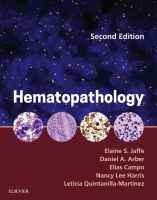Physical Address
304 North Cardinal St.
Dorchester Center, MA 02124

Definition Blastic plasmacytoid dendritic cell neoplasm (BPDCN) is a rare hematologic malignant neoplasm characterized by the clonal proliferation of immature plasmacytoid dendritic cells (PDCs), also known as professional type I interferon-producing cells, or their precursors. Previously known under different names…

Eosinophilia is an increase in the number of circulating eosinophils accompanied by an increase of eosinophils and precursors in the bone marrow and often in other tissues as well. The upper limit of normal for the eosinophil count, if subjects…

The most common subtype of cutaneous mastocytosis, termed urticaria pigmentosa, was first described in the 19th century, a decade before mast cells (MCs) were defined by Paul Ehrlich as metachromatic cells of the connective tissue. In 1949, the first histologic…

The myelodysplastic/myeloproliferative neoplasms (MDS/MPNs) are clonal myeloid disorders that, at the time of initial diagnosis, have some clinical, laboratory, or morphologic features supporting the diagnosis of a myelodysplastic syndrome (MDS), such as persistent cytopenias and dysplasia involving one or more…

Definition The myeloproliferative neoplasms (MPNs) are clonal hematopoietic disorders characterized by proliferation of cells of one or more of the myeloid lineages, erythroid, granulocytic, or megakaryocytic. Initially, the proliferation in the bone marrow is effective and associated with maturation of…

Acute myeloid leukemia (AML) is a heterogeneous group of diseases representing clonal proliferations of immature, nonlymphoid, bone marrow–derived cells that most often involve the bone marrow and peripheral blood and may present in extramedullary tissues. If untreated, AML follows an…

The myelodysplastic syndromes (MDS) are a set of diseases characterized by progressive peripheral cytopenias and dysplastic morphology of hematopoietic cells. MDS affects predominantly the elderly, but it can occur throughout life, including in childhood. MDS is a clonal hematopoietic neoplasm…

The 2016 revision of the fourth edition of the World Health Organization (WHO) classification of myeloid neoplasms, WHO Classification of Tumours of Haematopoietic and Lymphoid Tissues , is used in this book. The principles of the WHO classification have been…

Standard classification criteria for acute leukemia derive from the morphologic, cytochemical, and immunophenotypic characterization of bone marrow specimens and are designed to identify optimal therapy and predict prognosis. On the basis of these criteria, most cases of acute leukemia can…

Classification of Precursor Lymphoid Neoplasms Precursor lymphoid neoplasms encompass acute lymphoblastic leukemias (ALLs) and lymphoblastic lymphomas (LBLs), generally of either B-cell or T-cell origin. The majority of ALLs are derived from precursor B cells, and the majority of LBLs possess…